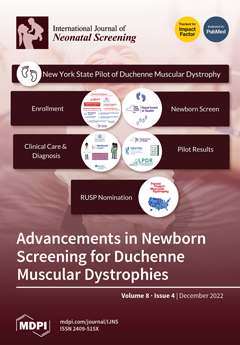Open AccessArticle
Congenital Cytomegalovirus Screening in Massachusetts Birth Hospitals: A Statewide Survey
by
Cheryl K. Glovsky, Kendall Carroll, Naomi Clark, Peter Colleran, Vanessa Colleran, Shayne Gaffney, Margaret Kenna, Evelyn Kuhns-Rankin, Tracy Evans Luiselli, Talia Mango, Barbara Morris, Charlotte Mullen, Matthew Stenerson, Laura Gibson and Michael S. Cohen
Cited by 1 | Viewed by 2289
Abstract
This study sought to assess the current state of screening for congenital cytomegalovirus infection in newborns among birth hospitals and newborn nurseries in the state of Massachusetts. A survey assessing hospital protocols for cytomegalovirus testing in newborns was distributed to all birth hospitals
[...] Read more.
This study sought to assess the current state of screening for congenital cytomegalovirus infection in newborns among birth hospitals and newborn nurseries in the state of Massachusetts. A survey assessing hospital protocols for cytomegalovirus testing in newborns was distributed to all birth hospitals and newborn nurseries in Massachusetts from November 2020 to February 2021. 73.3% of hospitals responded to at least one survey question. Of these, fewer than half (48.5%) had any established approach for neonatal cytomegalovirus screening. Salivary polymerase chain reaction was the most common testing modality. Most hospitals did not perform confirmatory testing for positive test results. Most respondents (87.9%) did not know or did not answer how results of cCMV screening were reported to families and who was responsible for coordinating care for cCMV-infected infants. We conclude that congenital cytomegalovirus screening protocols are absent or incomplete in most Massachusetts birth hospitals and newborn nurseries. A cohesive strategy involving standardized education and screening guidelines is needed to reduce the incidence and burden of congenital cytomegalovirus disease on children and their families.
Full article






